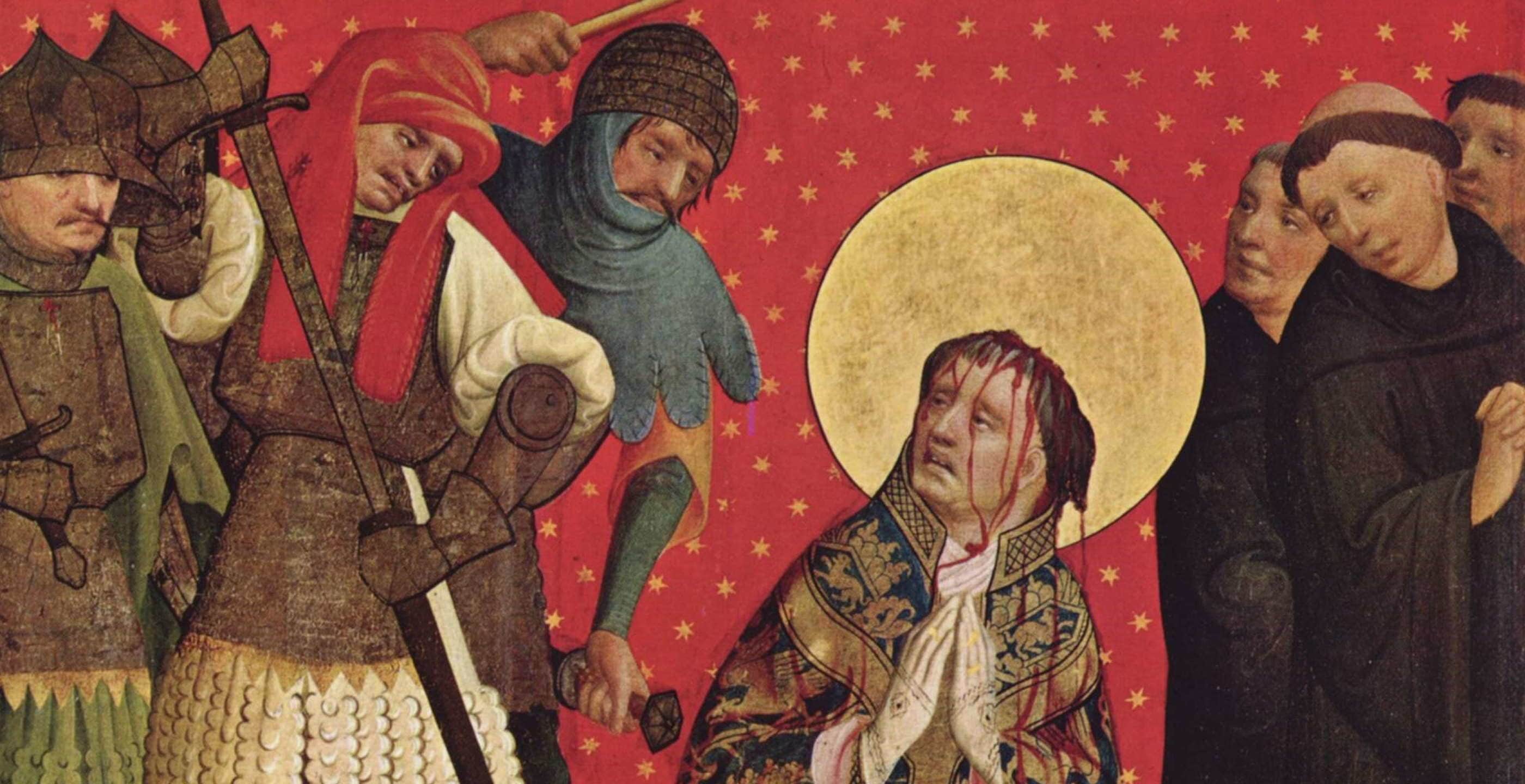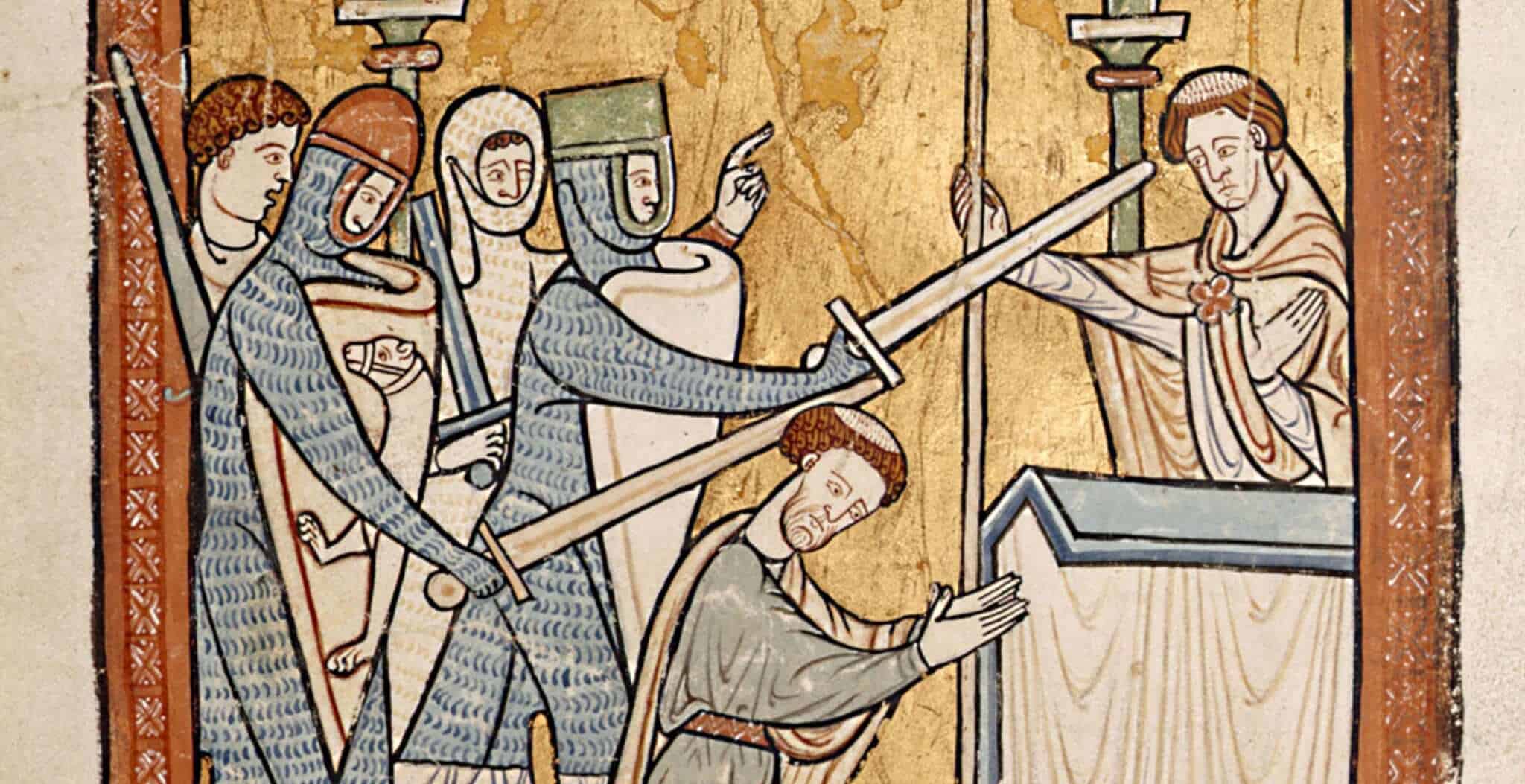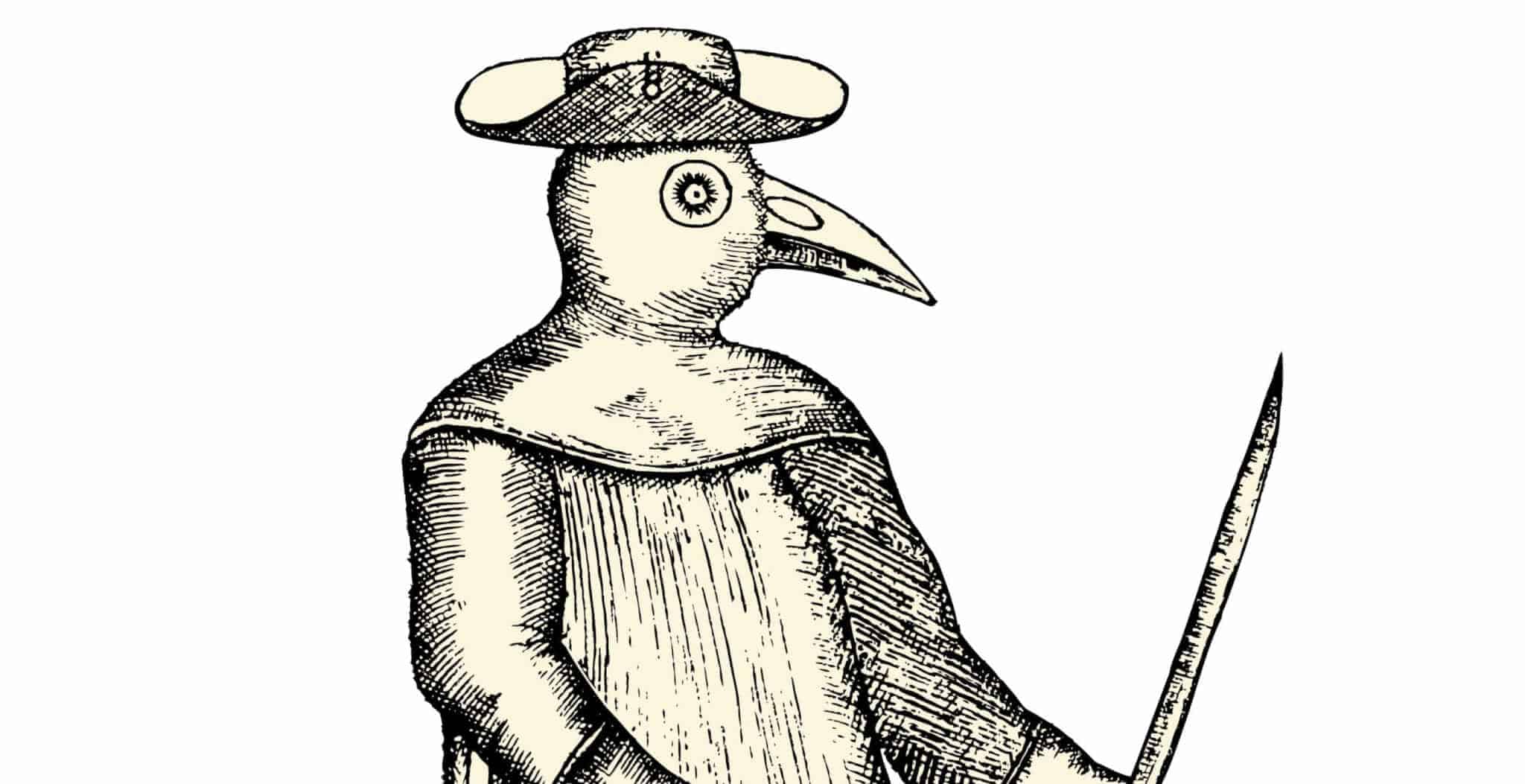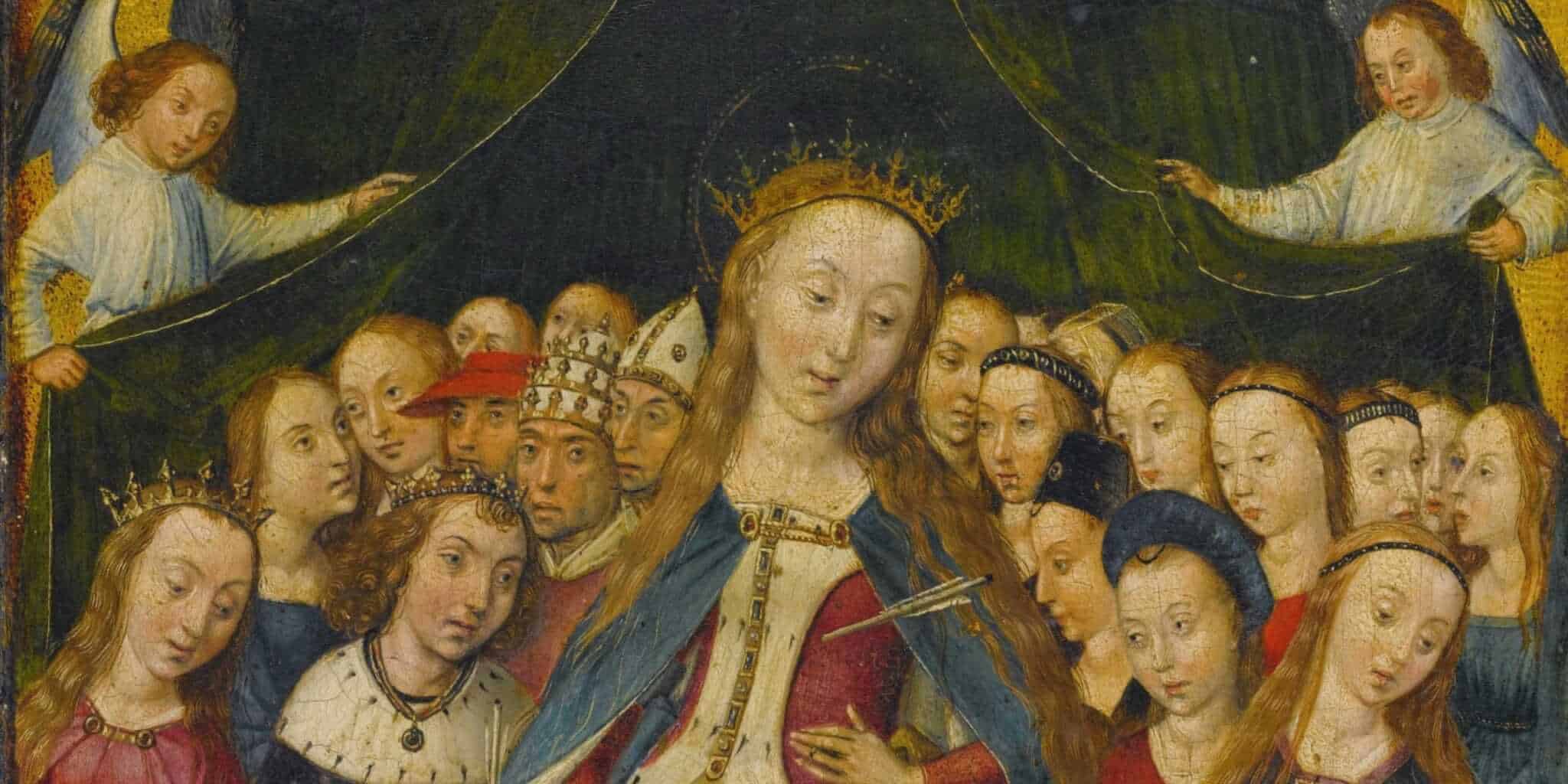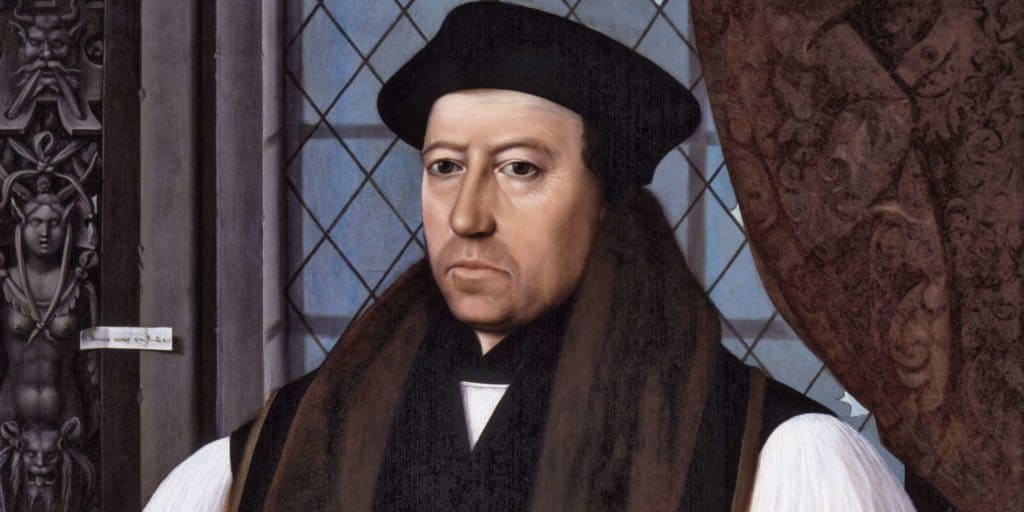The murder of Thomas Becket in 1170 and the manner of his death shocked the nation. After Becket took a blow to the head from King Henry II’s knights whilst praying in Canterbury Cathedral on 29th December 1170, Ernold the Goldsmith and a few monks scooped his brains into a basin. Becket’s body was then carried to the crypt, where the doors were bolted and barred until three months later, in April 1171, when the crypt was opened to the public.
Brother William and Prior Benedict, two monks from Canterbury, were appointed to keep a book which documented the miracles that took place whilst the visitors were at Thomas Becket’s tomb. There were 703 miracles recorded by William and Benedict which ranged from the cure of leprosy, blindness, paralysis to that of epilepsy. The news of Thomas Becket’s miracles spread like wild fire; as a contemporary wrote, the miracles first took place ‘about his tomb, then through the whole crypt, then the whole church, then all of Canterbury, then England, then France, Normandy, Germany, [and the] whole world.’
On 21st February 1173, Pope Alexander III proclaimed Thomas Becket a saint and the increasing number of miracles attributed to Becket made Canterbury Cathedral one of the great pilgrimage sites of Europe. The Trinity Chapel in Canterbury Cathedral which accommodated Becket’s shrine was surrounded by stained glass windows displaying the miracles of St. Thomas.
One of the miracles which can be seen in the Trinity Chapel’s windows is the cure of Petronella of Polesworth. Petronella was a nun who suffered from epilepsy and travelled down from North Warwickshire to Canterbury to visit the tomb of St. Thomas. The nun can be viewed sitting by St. Thomas’ tomb, bathing her feet in the saint’s holy water. Petronella left Canterbury not knowing whether or not she had been cured.
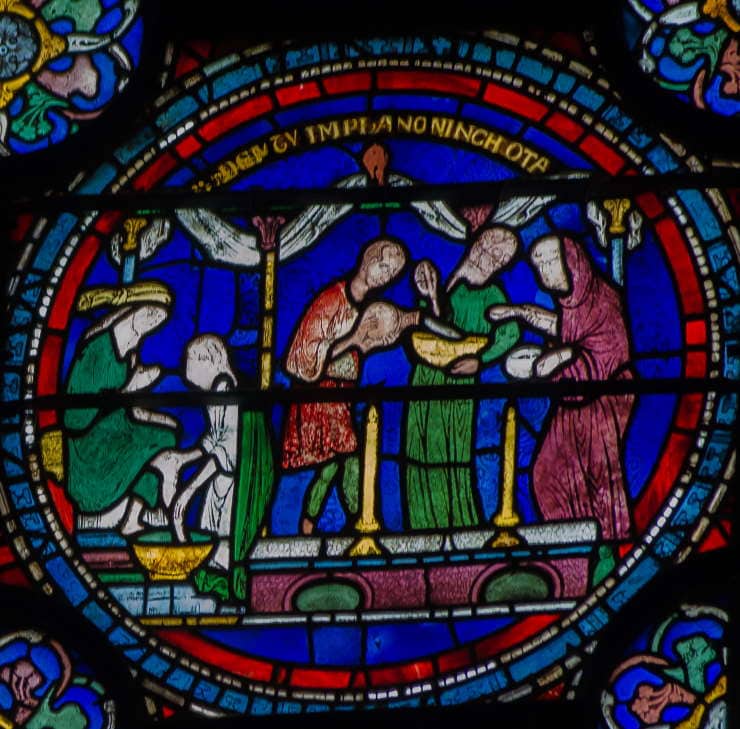
This was due to the individual’s own perception of epilepsy as those who suffered from the illness struggled to differentiate between epilepsy and madness. The miracle compliers concentrated on the physical symptoms of epilepsy and disregarded the mental signs of the illness. After Petronella left Becket’s tomb, she was deemed to have been cured as she did not have another fit.
Another miracle demonstrated in the windows of the Trinity Chapel is the cure of Richard Sunieve. In Geoffrey Chaucer’s ‘Canterbury Tales’, Richard Sunieve was Sir Henry Fitzherbert’s herdsman until he contracted leprosy. Throughout the twelfth and thirteenth century, leprosy was widespread due to the absence of medicine and the disease being so infectious. Leprosy was horrifying as it could alter the individual’s facial features as the disease travelled through the nervous system which could have caused the nose, toes or fingers to erode. Leprosy was everyone’s fear, to the extent that those who had the disease had to wear a bell, so they were heard coming.
After Richard had suffered with leprosy for eight years, he was forced out of his village of Edgeworth as his disease had disfigured his appearance. Richard travelled to Canterbury Cathedral in order to be cured. The window in the Trinity Chapel shows Richard stooping with his arms outstretched, touching the side and top of St. Thomas’ tomb. It was believed that the closer the proximity of the pilgrim and the saint, the more powerful and quicker the cure. In the background, the Canterbury monks can be seen mixing the saint’s blood with water. The next panel shows Richard cured and offering gold coins to show his gratitude.
The cure of Henry of Fordwich can be seen in another window in the Trinity Chapel. Henry was a young man who was suffering from a mental illness. The left panel shows two caretakers dragging him to St. Thomas Becket’s tomb. Henry, in the green clothes, has his hands tied behind his back and the caretaker, in purple clothing, can be seen hitting him with a stick. This was due to Henry shouting, raging and becoming violent after attacking his friends on the way to the Cathedral. The Latin inscription says ‘amens accedit’ which translates as ‘he arrives out of his mind’.
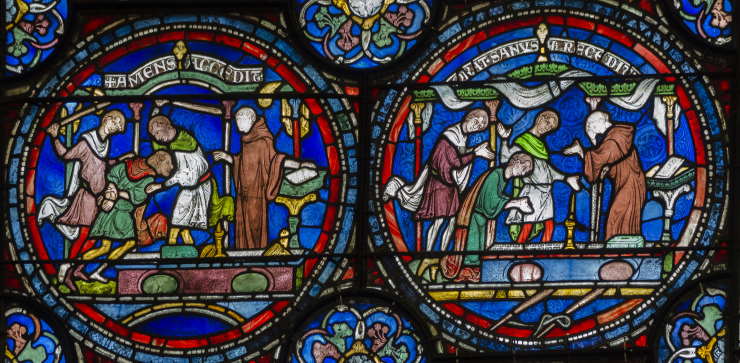
After spending a night at the Cathedral, the right panel shows a complete difference in Henry. Henry can be seen as calm and cured whilst the group cheer with happiness at his recovery. In the second scene, Henry is kneeling whilst his cloak is being put around him. As Henry is now cured, he leaves the sticks and rope that had been used to restrain him by the tomb. There may have been a reason behind this, as those in Medieval England believed that simple objects which were used during a ritual such as healing became items of faith.
After viewing the miracle windows at Canterbury Cathedral, just as tourists are today, pilgrims were offered souvenirs. Pilgrim souvenirs were mementoes, such as badges or brooches depicting the shrine of St. Thomas Becket, showing that they had made the pilgrimage to Canterbury Cathedral.
By Katie Brooke. Katie Brooke BA has just finished her Masters in Medieval and Early Modern History with a specific interest in Henry VIII’s court.
